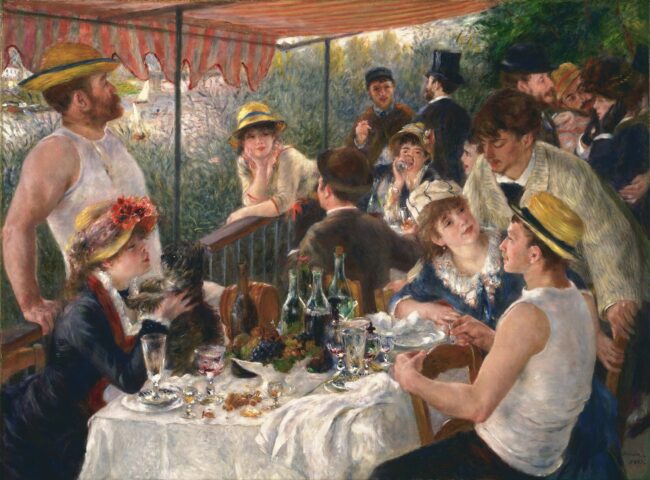“Nice and easy does it every time”— Sixto Rodriguez
How do you write about a social gathering of any kind in a novel? It could be a meeting at work, a party with friends or even a traditional family get-together. It’s extremely hard, whether your character comes into a room or space after everyone else, or you write it from the heart of the group and work your way out. Why? Does it have anything to do with our own misgivings about mingling in larger groups? How about now, post pandemic, when many are still not comfortable with fully socializing, while others are rushing in with relief where they might have feared to tread pre-pandemic?
Trying to accurately describe the many layers of awareness, anxiety, insecurity, need, confidence, and curiosity that make up each person and how those gradations are hidden or revealed in a large social gathering is a challenge most writers find both exciting and daunting. Me, too. It’s a lot like writing music. The narrative line needs to be the main concern leading all other creative decisions, as is the case when writing a scene. Maybe my appreciation for the one voice comes from my childhood exposure to classical Broadway musicals of the 1950’s, which in turn sprang from the folk backgrounds of the WWII European immigrants who wrote them. That melodic line gave me a bias toward simplicity, a way to hear through the harmonies and complexities. I like that with socializing, too. Keep it simple. But some characters can get sidelined telling the story that way, and then the author must go back to bring them forward to the reader’s attention, much as a caring host would do at a party.
So how does the author accomplish that for a character who comes late to the event, as my protagonist Emily de Koningh does in my new book, a sequel to The Gilded Cage? And if the reader is focused on her as she enters the room, how will the other five people already there still contribute to the counterpoint without obliterating the protagonist’s vocal line? I should probably make my readers wait for the book to solve this dilemma, but I’d prefer to share it now because it comes full circle with a quandary we have today.
In the interest of simplicity, this time I let her pause outside the room in order to collect her own impressions and share them and her thoughts with the reader. That done before she had to interact with the others, I was freer to follow each character’s part as she entered. Musically, it was like introducing a new theme on its own each time before it had to combine with the others. It worked well, and in the end convinced me that the clean, simple approach to social entrance—or reentry as the case may be for all of us post-pandemic—may well be more successful than diving into the chaos all at once. Even if we’re hungry for change, ‘nice and easy does it every time…’ Judging my own reluctance to resume a dense social schedule, I assume there are others who may have experienced the hesitation all along, not just now—only now we acknowledge it and give it more acceptance than we ever did before.
Writing a new group scene in my book and recognizing the importance of including both a simple line (diatonicism) as well as counterpoint (chromaticism) into the scene, I appreciate the fact that authors bring their own social predispositions into the room with the characters. I wonder if living through the pandemic of 2020 will cause our characters to react differently to each other. I guess we’ll have to wait and see if we treat each other differently. But I think they, and we, will appreciate a chance to step back, observe from a distance, and then take it nice and easy.

